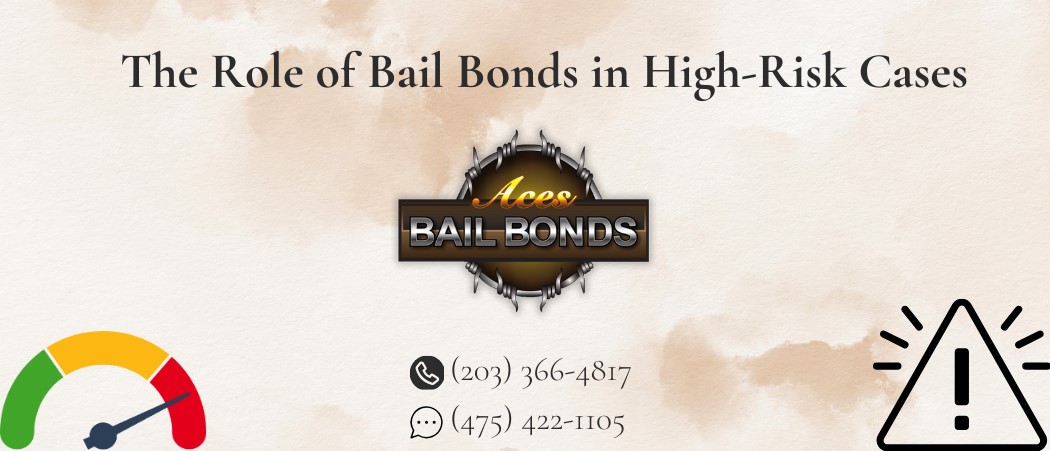The Role of Bail Bonds in High-Risk Cases
Bail bonds are a cornerstone of the criminal justice system, providing defendants a chance to secure release while awaiting trial. In high-risk cases, however, bail bonds take on a more complex and critical role. These situations often involve defendants with a history of flight risk, violent charges, or complicated legal issues, making the function of bail bond agents essential to balancing fairness, public safety, and compliance.
This guide explores how bail bonds operate in high-risk cases, the challenges they present, and the evolving role of bail bond services in today’s justice system.
Understanding High-Risk Bail Cases
High-risk bail cases involve factors that elevate the stakes for courts, bail agents, and communities. Common risk factors include:
-
Flight Risk – Defendants with a history of skipping court or facing severe penalties may be more likely to flee.
-
Danger to the Community – Charges involving violent crimes raise concerns about public safety.
-
Complex Legal Situations – Multiple charges, high-profile cases, or significant legal complications increase risk.
-
Criminal History – Defendants with extensive records are often categorized as high-risk by courts and bail bond companies.
The Function of Bail Bonds in High-Risk Cases
1. Ensuring Court Appearance
The core function of bail bonds is to guarantee defendants return to court. In high-risk cases, this includes:
-
Financial Incentives – Bail acts as a financial guarantee to reduce flight risk.
-
Enhanced Monitoring – Bail bond agents may require electronic monitoring, GPS tracking, or frequent check-ins.
2. Protecting Public Safety
When defendants pose a risk to the community, bail bond services help mitigate danger through:
-
Conditional Release – Restrictions on travel, curfews, or contact with certain individuals.
-
Supervised Bail – Regular reporting to bail bond agents or authorities.
3. Facilitating the Legal Process
High-risk bail bonds also support fairness in the legal system by:
-
Reducing Jail Overcrowding – Allowing defendants to await trial outside of custody.
-
Supporting Legal Preparation – Giving defendants time to work with attorneys and prepare a strong defense.
4. Expertise and Coordination
-
Risk Assessment – Experienced bail bond agents evaluate defendant risk levels and tailor conditions.
-
Collaboration – Agents coordinate with attorneys, law enforcement, and the courts to enforce bail compliance.
5. Balancing Rights and Responsibilities
-
Presumption of Innocence – Bail bonds uphold defendants’ rights while ensuring safety.
-
Fair Treatment – Even in high-risk cases, bail ensures access to legal representation and due process.
Challenges in High-Risk Bail Cases
-
Risk of Flight – Despite safeguards, some defendants attempt to flee. Bail bond agents must employ vigilant monitoring and legal measures, such as increased bail amounts.
-
Public Perception – High-profile cases attract media scrutiny, influencing how communities view bail practices. Transparent bail bond services help build trust.
-
Complex Legal Issues – Multiple charges and legal intricacies require strong coordination between bail bond companies, attorneys, and law enforcement.
The Future of High-Risk Bail Bonds
The role of bail bonds in Connecticut and across the U.S. is evolving as reform efforts, technology, and alternative approaches emerge:
-
Bail Reform – Many states are re-examining high-risk bail practices to ensure fairness and reduce inequality.
-
Technological Advances – GPS monitoring, electronic check-ins, and data analytics make managing high-risk defendants more effective.
-
Alternative Models – Some jurisdictions are shifting toward risk-based assessments instead of purely financial bail.
Conclusion
High-risk bail bonds play a vital role in balancing defendant rights with public safety. They ensure court appearances, provide structure through supervision, and allow defendants to prepare for trial while protecting the community.
At Aces Bail Bonds, our experienced bail bond agents in Connecticut specialize in handling high-risk cases with professionalism, compliance, and care. By leveraging technology, monitoring systems, and legal expertise, we help ensure that justice is served while defendants maintain their right to fair treatment.
As the bail system continues to evolve, bail bond services will remain a critical part of managing high-risk defendants in the criminal justice system.

